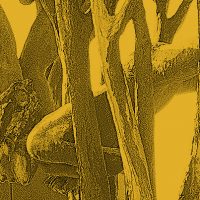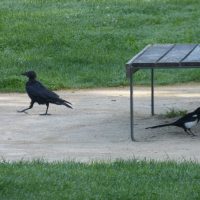
Which is easier – to create something new or proceed along a well-trodden path? Which is more exhausting – routine or creative activity? Since creativity has always been infinitely rarer and much more highly valued than stereotyped, routine work, an unspoken assumption has developed suggesting that creativity is not only more prestigious, but also more complex. But complex for whom?
During the 1970’s the American psychologist Dr. Colin Martindale ran an experiment which was not given enough attention until quite recently. He took two groups of students from opposite extremes, one with strong creative impulses, the other with no such drive. The presence or absence of creative ability was measured using various methods, including the Gilbert test and evaluation by competent experts (teachers) who assessed their students’ originality of thought. Each group received two sets of tasks. Tasks in the first series required a creative approach. They could not be solved just by depending on familiar algorithms. They were not simple, but did not require special inventiveness. The brain’s electrical activity (EEG) was registered while subjects were working on the tasks.
Here I should explain that a concept developed by a major scientist, Professor Donald Lindsley, in the middle of the last century has long been considered key in psychophysiology. He suggested a scale of functional states of the brain, from deep sleep to intense, super-active wakefulness. He found that there is a link between the level of wakefulness and the brain’s electrical activity. At the level of very calm, relaxed wakefulness, with no signs of directed and focussed attention, almost on the verge of sleep, the rhythm of rest dominates the EEG – the so-called alpha rhythm, from 8 to 12 waves a second. The more relaxed the subject, the more pronounced the alpha rhythm, the greater the synchronicity and amplitude. As the subject becomes active and concentrates, the alpha rhythm diminishes. During strenuous intellectual exertion it disappears altogether. This happens because additional physiological stimulation comes up from deep sections of the brain to the higher parts of the cortex, activating the brain and preparing it for an intensive work regime.
Professor Lindsley’s chart dominated psychophysiology for a number of decades. Meanwhile, a number of facts emerged over time casting doubt on its universality. For example, it was shown that in certain states of consciousness (such as meditation) the alpha rhythm strengthens, even by comparison with relaxed wakefulness. And yet according to accepted psychophysiological criteria, this state was certainly not drowsiness, but a very active, though highly specific, activity of the brain, during which serious psychological problems could be resolved and the conditions created for active control over internal organs and indeed the whole inner workings of the organism (pulse and breathing rate can be slowed or accelerated, arterial pressure altered, etc.). However, the study of special states of consciousness has never been part of the mainstream development of the science of the brain, and Lindsley’s chart has remained essentially unchanged.
Research carried out by Dr. Martindale and a number of other scientists who confirmed his findings delivered a serious blow to the accepted wisdom. They found that the alpha rhythm of creative students working on creative tasks not only did not diminish, it even showed a tendency to strengthen, especially in the right hemisphere. At the same time, when these students were solving routine tasks, the alpha rhythm diminished, fully in line with Lindsley’s chart. The same was true of the students from the group of uncreative students, and it diminished as well when they tried (without success) to solve the creative tasks. Thus, the only, but very significant, exception to the general rule is the behaviour of the brain in solving creative tasks, and only in those cases where the brain is capable of such activity.
But this is not happening during sleep! Creativity is a high brain activity, maybe even the highest if achieving results is our criterion. It means there is some kind of mystery in these findings.
As I studied the data, I began to suppose there is a difference in principle between the organisation of the work of the left hemisphere, needed for solving standard tasks with a known, monosemantic algorithm, and of the right hemisphere, which generates a polysemantic context, so important for creativity.
To check this hypothesis I worked with Professor Viktor Arshavsky, performing numerous psychophysiological studies of the work of the brain during the problem solving process, looking at both right and left hemispheres. We chose our subjects from different cultures characterised by varying degrees of development of right-hemisphere (image) thinking. In particular, we studied subjects from ethnic groups living in the far North East of Russia, such as Chukchi and Evenks. Their remoteness from Western civilization and closeness to nature means they have retained a predominance of right-hemisphere, holistic thinking and almost every one of them has outstanding spatial orientation and highly developed skills in handicrafts (carving on bone, etc.). Our initial hypothesis was confirmed: the way these people solved tasks was based on thinking in images, without the need for additional stimulation of the brain and without suppressing the alpha rhythm.
This meant that creating an image context did not require additional stimulation of the brain for those people who had not lost this facility during the process of adapting to our civilization! This meant that only a monosemantic context, the modelling of reality, requires such stimulation. This meant that most of the brain’s effort goes on reducing the potential connections between objects and phenomena for the sake of creating a monosemantic context, monosemantic mutual understanding, the establishment of monosemantic causal relationships. And, consequently, creative people are right when they say that routine tasks tire them significantly more than solving creative tasks – it is routine activity that demands the most ‘mental energy’.
It seems that all the physiologists testing the level of the brain’s activity as the alpha rhythm reduces are like an observer who judges a horse’s speed by how often the rider uses his whip. Of course, such a connection is valid under some circumstances: the more the rider applies the whip, the faster the horse will go. But what if his horse is naturally a goer or, on the contrary, stubborn? In the first case, it will get a move on without the whip, and in the second refuse to budge, no matter how hard the whipping. It’s the same with additional activation of the brain. It gives a kick only to the left hemisphere as it does its specific job, while the right either keeps functioning on its own with no need for a kick, or it won’t function at all, no matter what. And it is not additional physiological stimulation that is needed to improve performance, but special kinds of training.
I would like to draw your attention to one interesting coincidence. I wrote in an earlier chapter that search activity has a tendency to self-development and self-reinforcement, following the law of positive feedback: during search activity we see the replenishment of the chemical substances in the brain which are needed for this activity to continue further. Further, creativity is a typical model of search activity and the brain does not require additional stimulation during this kind of search activity. It is, so to speak, operating in a regime of self-sufficiency. From this may follow some very interesting and unexpected conclusions which can be relevant even to such mysterious phenomena as telepathy and precognition.



